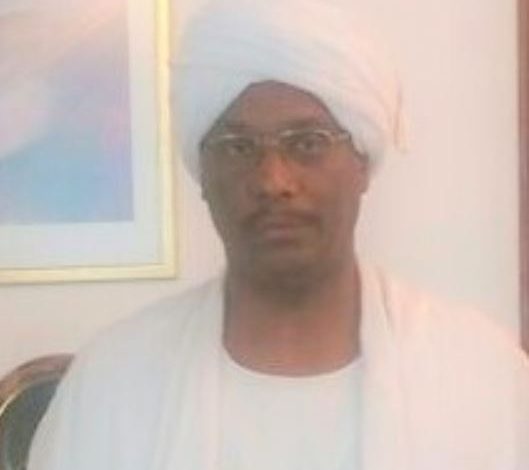Opinion
An Unknown Chapter in the History of Currency in Sudan

By: Mohamed Mahmoud Raji
As a Defiance to Al-Azhari, the First Paper Currency Was Burned Before Circulation.
Many writers, journalists, and historians interested in the history of monetary circulation in Sudan consider September 15, 1956 as the beginning of the circulation of Sudan’s first paper currency. This currency replaced the Egyptian currency, which had been the legal tender within Sudan since its occupation in 1899, alongside some English coins (shilling and florin).
This is a mistake and confusion, as the actual circulation of the first national paper currency began on April 18, 1957.
The source of the confusion lies in the fact that the mentioned date (September 15, 1956) was the deadline set by Ismail Al-Azhari’s government to start circulating the paper currency, which had been printed in England and arrived at Port Sudan in two batches: the first on February 22, 1956, and the second on July 12. These batches were transported to Khartoum via railway to be stored in the Ministry of Finance’s treasury until their scheduled distribution.
However, this plan was derailed due to two reasons:
1. Unresolved negotiations between the Sudanese and Egyptian governments over the volume of Egyptian currency in circulation in Sudan and the procedures for its withdrawal.
2. More critically, the new currency bore the signature of Ismail Al-Azhari, leader of the National Unionist Party and the Prime Minister, violating norms that reserve such signatures for the chief financial authority.
Leaked news about this sparked furious protests from the opposition, represented by the “Umma Party” and the “Southern Liberal Party.” Umma Party supporters held massive demonstrations, threatening to boycott the currency if issued, demanding its burning and replacement with a version signed by the chief financial authority.
These protests coincided with the fall of Al-Azhari’s second (national unity) government on July 5, 1956, following a no-confidence vote in the Constituent Assembly due to pressure from both Al-Sayyids (Abdel Rahman Al-Mahdi and Ali Al-Mirghani) and internal splits in the National Unionist Party. Some members left the party, driven by Ali Al-Mirghani, to form the “Democratic People’s Party” led by Sheikh Ali Abdel Rahman, Minister of Education.
As a result of this split, the National Unionist Party lost its parliamentary majority. This paved the way for the Umma Party to step in, supported by Al-Sayyids and the defectors. Abdullah Khalil, Secretary-General of the Umma Party and former Minister of Defense in Al-Azhari’s second government, became Prime Minister, forming a coalition government with the Democratic People’s Party and the Southern Liberal Party. This government later handed over power to General Ibrahim Abboud on November 17, 1958, marking Sudan’s first military coup.
On August 2, 1956, Minister of Finance Ibrahim Ahmed issued a statement revealing that the received currency amounted to 22 million Sudanese pounds, printed in five denominations: £10, £5, £1, 50 piastres, and 25 piastres, at a printing cost of £14 million Sterling.
On August 6, the Council of Ministers, chaired by Abdullah Khalil, held an emergency meeting. Finance Minister Ibrahim Ahmed explained the circumstances leading to Al-Azhari signing the currency. He revealed that ministry officials had suggested the Prime Minister’s signature, citing precedents in other countries. The recommendation was submitted to the Council of Ministers, which approved it after consulting the opposition through a communication between Mubarak Zarrouq and Mohamed Ahmed Al-Mahjoub, who gave his approval.
However, the currency was not issued as scheduled in September 1956.
On November 21, after an emergency Cabinet meeting, the Finance Minister announced that the Council had unanimously decided to burn the currency due to the impracticality of changing the signature post-printing. The Council also decided to reprint the currency with the signature of the Chairman of the Currency Committee.
The military executed the decision the same day by burning 11 tons of banknotes stored in wooden boxes. The public learned about the event the following day through Radio Omdurman.
Once the news spread, supporters of the National Unionist Party and many citizens took to the streets in large demonstrations across Omdurman, Bahri, Khartoum, and other cities, chanting slogans such as “Burning the currency is burning the people,” “Executing the currency is executing the people,” and “No independence without currency.” Newspapers described these protests as massive (Al-Ayam, August 15, 1956).
After the currency was burned, the government initiated reprinting with two key changes:
1. Changing the issuing authority’s name from “Government of Sudan” to “Republic of Sudan – Sudanese Currency Committee.”
2. Replacing Al-Azhari’s signature with the signatures of the Finance Ministry’s Currency Committee Chairman, Mamoun Behairi, and committee member Ibrahim Osman Ishaq.
The first batches of the new currency were printed in the USA, while subsequent batches were printed in Britain. The U.S. transported the first batch (two million pounds in 50- and 25-piastres notes) to Khartoum on February 21, 1957, aboard a military aircraft, waiving the transport costs of over £4,000.
On April 18, 1957, the paper currency was officially issued, bearing the original date of September 15, 1956, but now signed by Mamoun Behairi and Ibrahim Ishaq. The denominations included £10, £5, £1, 50 piastres, and 25 piastres, replacing the Egyptian currency.
The process of exchanging the old currency lasted until October 8, 1957, successfully withdrawing £23,757,454 worth of Egyptian banknotes, which were handed over to the Egyptian government.
Notably, Sudan’s first coins were introduced earlier, on January 19, 1957, in seven denominations: 10 piastres, 5 piastres, 2 piastres, 1 piastre, 5 milliemes, 2 milliemes, and 1 millieme. These were initially minted in Pakistan before domestic coin production began with the opening of the Sudanese Mint in November 1960.
Due to the widespread use of Egyptian and British coins, particularly in remote areas, their withdrawal took longer, continuing until May 31, 1961.
On July 7, 1957, the use of Egyptian and British currencies in Sudan became illegal. This marked Sudan’s first currency replacement operation, completed before the currency even reached the public’s hands.
In 1959, the Sudanese Parliament passed the Bank of Sudan Act, replacing the Sudanese Currency Committee as the issuing authority. The Bank commenced operations in 1960, appointing Mamoun Behairi as its first Governor, whose signature appeared on all subsequent banknotes.
The 25-piastre red note bearing Al-Azhari’s signature is one of the burned banknotes.



